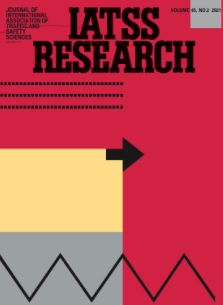
In recent decades, remarkable improvements in road safety have been achieved in the formof reductions of crash numbers. However, the improvement of vulnerable road users’ safe mobility has not been as consistent, especially for pedestrians. The objective of this research is to examine the relationship of pedestrian safety attitudes and self-declared behaviour in Greece. To fulfil this objective, two mixed effects binary logistic regression models and a Structural Equation Model (SEM) were developed using data from the ESRA2 survey. The two
selected dependent variables for modelling are (i) crossing the road at places other than at a nearby (distance less than 30 m) designated pedestrian crossing and (ii) crossing the road when a pedestrian light is red. Several statistical relationships were discovered correlating these unsafe self-declared behaviours with numerous explanatory variables (and additionally five latent variables in the SEM). The mixed binary logistic regression models revealed statistically significant random intercepts for the explanatory variables of (i) self-reported remaining calm in traffic (for both dependent variables) and (ii) self-reported respecting of traffic regulations (for crossing in places other than pedestrian crossings). From the SEM, a positive statistically significant covariance of the two dependent variables was discovered, revealing that a pedestrian who will engage more frequently in crossing the road with red pedestrian light is more likely to also engage in crossing the road at places other than at a nearby pedestrian crossing. Lastly, recommendations that could enhance pedestrians’ safety, such as educational campaigns or infrastructure interventions are provided.
| ID | pj228 |
| DOI | |
| Tags |








